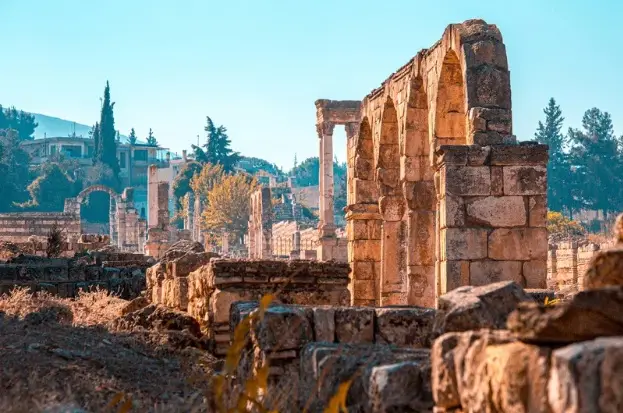Ancient Artz: How Mesopotamian Art Defined Early Civilization
Art has been a central part of human life for thousands of years, from prehistoric cave paintings to the grand sculptures and paintings of ancient civilizations. These works, collectively known as Ancient Artz, provide an incredible insight into the lives, cultures, and beliefs of people who lived long ago.
Ancient Artz encompasses a wide array of art forms, including painting, sculpture, architecture, pottery, and textiles. Each piece is like a window into history, showing us the values and emotions of civilizations long past.
Throughout history, art has been used to tell stories, express religious beliefs, and honor powerful figures. These works weren’t just for decoration—they served a much deeper purpose in society.
Ancient artists created pieces that reflected their worldviews and societal structures, and many of these works have survived to modern times, allowing us to learn from them.
In this article, we’ll explore the significance of Ancient art from different parts of the world and show how these ancient masterpieces continue to inspire us today.
Art as a Reflection of Society
Ancient art was more than just a creative expression. It often reflected the religious, cultural, and political beliefs of the societies in which it was created. For example, many ancient works of art depict gods, myths, and rituals that were important to a civilization. In other cases, art was used to commemorate rulers and record significant historical events.
The materials and methods used to create ancient art were often closely tied to the resources available in a given region. Some artists worked with stone, others with clay or metal. The choice of materials also reflected the significance of the artwork—precious materials like gold or ivory were often reserved for religious or royal purposes.
Mesopotamian Art: The Cradle of Civilization
One of the earliest civilizations to leave behind an extensive collection of art was Mesopotamia, known as the cradle of civilization. Mesopotamian art focused on religious and political themes, as the region’s society was heavily centered on worship and the ruling power of kings.
One of the most famous examples of Mesopotamian art is the Stele of Hammurabi, a tall stone monument that inscribed one of the earliest written codes of law. This type of artwork had a practical purpose as well as an aesthetic one—it recorded important laws for all to see.
Mesopotamian sculptures and reliefs often depicted gods and kings in exaggerated, larger-than-life forms, emphasizing their importance in society. These figures were portrayed with detailed expressions and postures, reflecting the artists’ skill in conveying authority and divinity.
Egyptian Art: Eternity in Stone
Ancient Egyptian art is the most instantly recognizable of all ancient art forms due to its consistent style and focus on the afterlife. Egyptian artists were focused on creating works that would last for eternity, especially those meant to accompany the dead in the afterlife. Pharaohs were often immortalized in massive stone statues, like the iconic Great Sphinx of Giza.
The Great Sphinx is a symbol of power, with the body of a lion and the head of a pharaoh. This piece, carved from limestone, was meant to protect the pharaoh’s tomb. Similarly, the intricate wall paintings found in tombs depict scenes of daily life, religious rituals, and the soul’s journey to the afterlife, ensuring the deceased was well prepared for their eternal existence.
Greek Art: The Birth of Classical Ideals
Ancient Greek art is celebrated for its incredible attention to proportion, balance, and idealized beauty. Greek artists were pioneers in creating lifelike sculptures and paintings that portrayed the human form with stunning accuracy. Their goal was to capture the perfect human figure, a concept known as “idealism,” which became a hallmark of Greek art.
One of the most famous examples of Greek sculpture is the Venus de Milo, a representation of the goddess of love, which exemplifies the Greeks’ mastery of anatomy and movement. Another example is the Laocoön Group, which shows the dramatic tension and emotion that Greek artists were able to capture in their work.
Greek pottery also showcased detailed scenes of mythology and daily life, giving us a glimpse into the social and cultural fabric of ancient Greece. These pieces were not only functional but also beautifully decorated, making them both useful and artistic.
Roman Art: Power and Realism
The Greeks heavily influenced Roman art, but the Romans brought their unique twist to artistic expression. While Greek art focused on ideal beauty, Roman art emphasized realism. The Romans were skilled portrait artists, and their sculptures often depicted their subjects with unflinching accuracy, including imperfections. This realism can be seen in the many busts of Roman emperors, such as that of Julius Caesar, which captures even the smallest facial details.
In addition to portraiture, Roman artists were master builders, creating monumental structures that showcased their engineering prowess. The Colosseum and Pantheon are two of the most famous examples of Roman architecture, standing as symbols of the grandeur and power of the Roman Empire. Roman frescoes and mosaics adorned the homes of the wealthy, illustrating scenes from daily life, history, and mythology.
Asian Art: Spiritual and Natural Inspirations
Asian civilizations like China and India also produced a wealth of ancient art that reflected their spiritual beliefs and connections to nature. In China, ancient art was closely tied to Confucianism, Taoism, and Buddhism. Chinese artists were renowned for their skills in pottery, calligraphy, and bronze work.
One of the most impressive feats of ancient Chinese art is the Terracotta Army, a vast collection of life-sized clay soldiers buried with the first Emperor of China, Qin Shi Huang. These sculptures were meant to protect the emperor in the afterlife and demonstrate the scale of Chinese craftsmanship.
In India, much of the ancient art was dedicated to religious purposes, particularly temple carvings and statues of deities. The Ajanta Caves in India contain exquisite murals and sculptures depicting scenes from the life of the Buddha, showcasing the artistic depth and spiritual focus of Indian culture.
The Cultural Importance of Ancient Artz Today
While the civilizations that created these masterpieces may have disappeared, their art continues to inspire and educate us. Ancient Artz offers a powerful connection to the past, allowing us to see what life was like thousands of years ago. Through their works, ancient artists have passed down their cultural values, beliefs, and emotions, giving us a deep appreciation for their way of life.
Museums all over the world house collections of ancient art, preserving these treasures for future generations. These works continue to influence modern artists, who draw inspiration from the timeless beauty and craftsmanship of ancient civilizations.
Whether through the grandeur of Egyptian monuments, the delicate pottery of Greece, or the spiritual artistry of India, Ancient Artz reminds us of human beings’ incredible creativity and skill.
Conclusion
Ancient Artz is not just a collection of old artworks; it is a bridge between the past and present. These pieces have stood the test of time, offering a glimpse into the minds and hearts of the people who created them. From the sophisticated sculptures of Greece to the intricate pottery of China, ancient art continues to captivate and inspire us.
Its enduring relevance is a testament to the timeless beauty and significance of artistic expression. You can also know about The View Episode 141 by going through that link.
Frequently Asked Questions
What are some famous examples of Ancient Artz?
Some of the most famous examples include the Great Sphinx of Giza, the Venus de Milo, the Terracotta Army, and the Stele of Hammurabi.
How did ancient artists choose their materials?
Ancient artists typically used materials that were readily available in their regions, such as stone, clay, and metal. The choice of material often had symbolic or religious significance, with precious metals reserved for royal or spiritual purposes.
How is ancient art preserved today?
Many ancient artworks have been preserved due to favorable environmental conditions, such as dry climates, or through careful burial, as with the Terracotta Army. In other cases, preservation efforts by museums and cultural institutions have helped protect these works from decay.
Why is Ancient Artz still important today?
Ancient Artz provides a deep insight into the cultures and societies of the past. By studying these works, we can better understand the beliefs, values, and daily lives of ancient people, enriching our understanding of human history.






